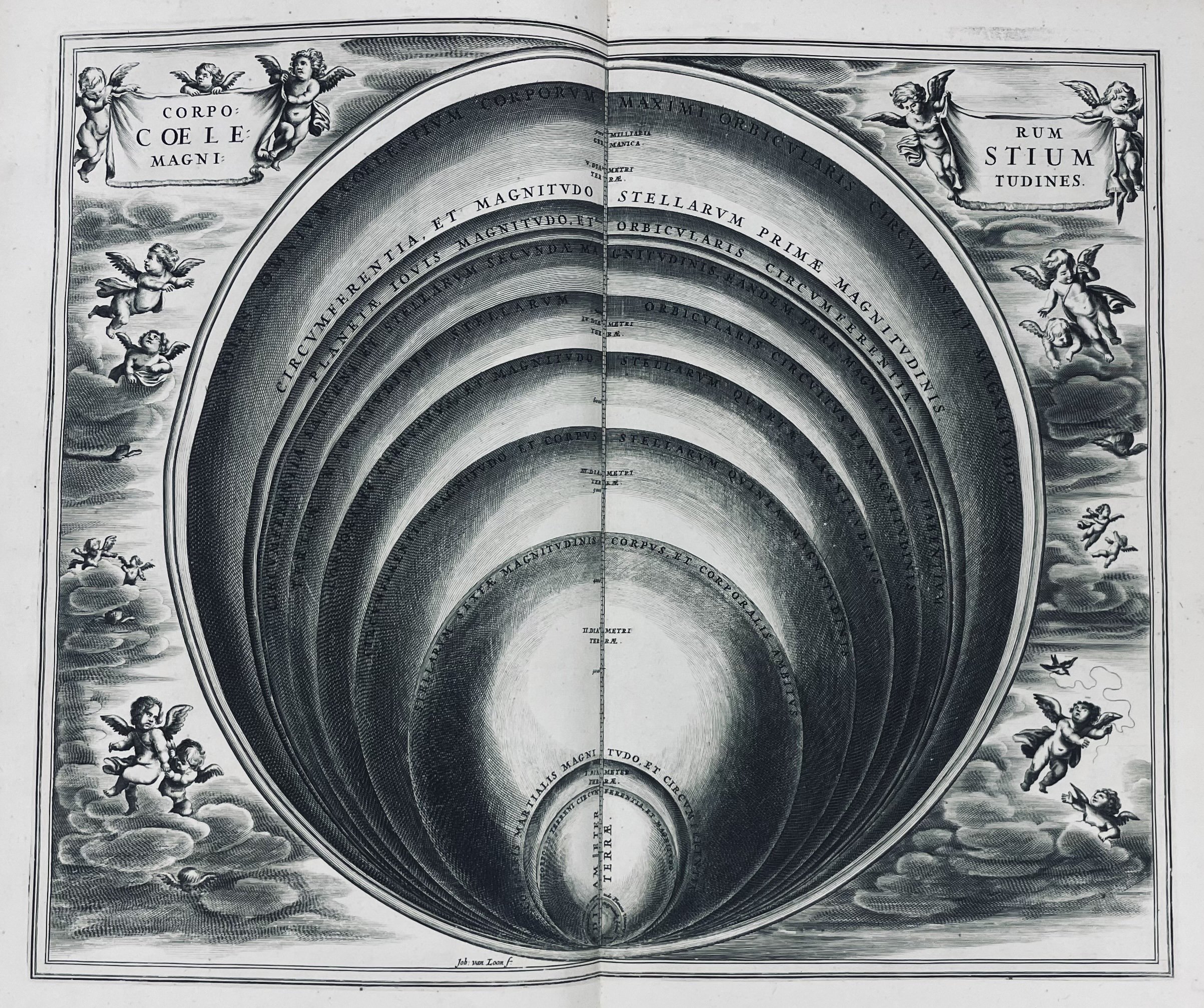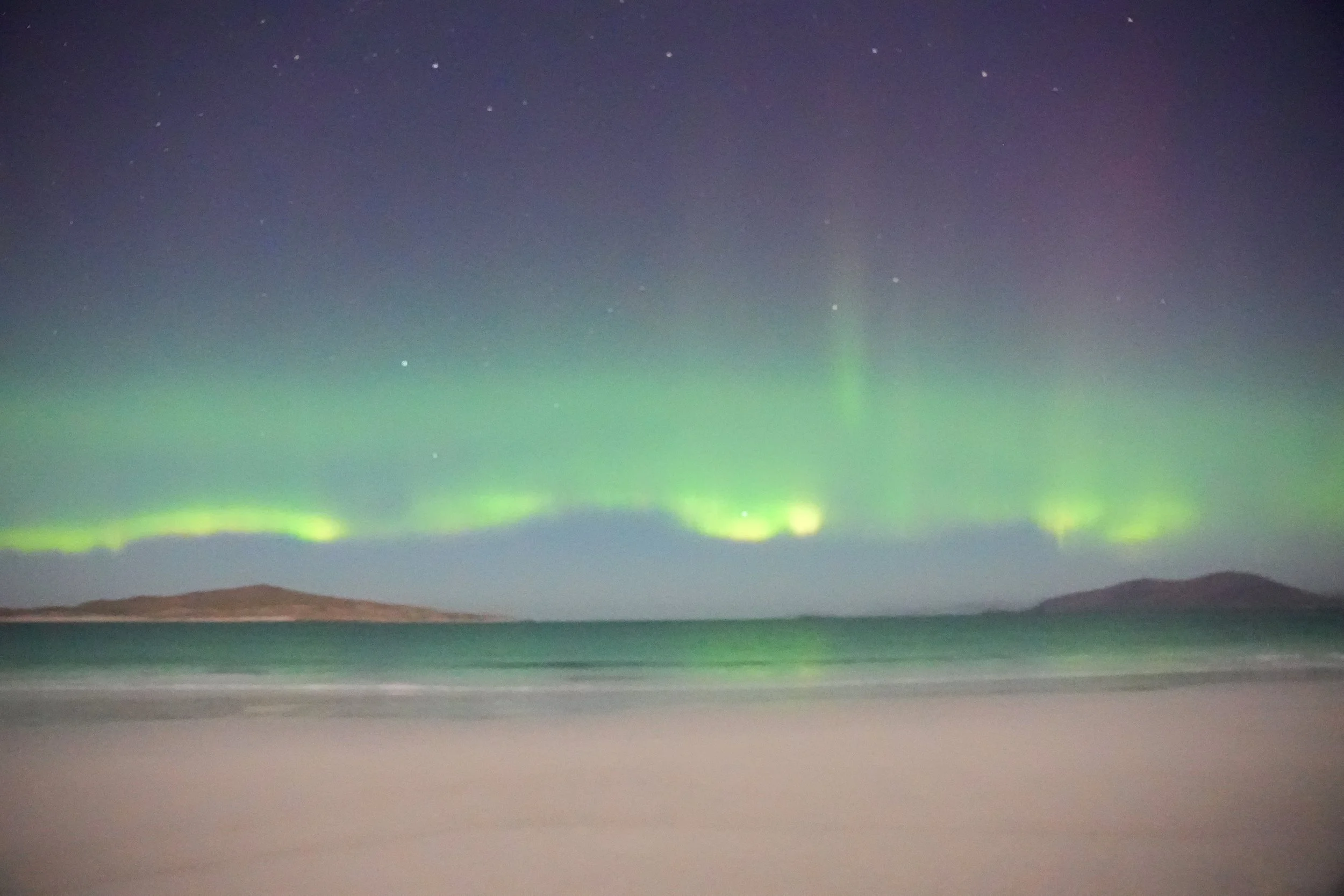Metaphysical cosmologies
“The most beautiful experience we can have is the mysterious. It is the fundamental emotion which stands at the cradle of true art and science. Whoever does not know it and can no longer wonder, no longer marvel, is as good as dead, and his eyes are dimmed. It was the experience of mystery - even if mixed with fear - that engendered religion. A knowledge of the existence of something we cannot penetrate, our perceptions of the profoundest reason and the most radiant beauty, which only in their most primitive forms are accessible to our minds - it is this knowledge and this emotion that constitute true religiosity: in this sense, and in this alone, I am a deeply religious man.”
Albert Einstein: The Meaning of Life (1931)
Forthcoming exhibition dates: Metaphysical Cosmologies 17th January - 28th March 2026 - Taigh Chearsabhagh Museum and Art Gallery, North Uist.
Metaphysical Cosmologies explores our relationship with the universe from the neolithic standings stones at Calanais to present day cutting edge astronomy. It aspires to engender a sense of wonder, spiritualism and mystery that as humans we associate with the cosmos while shedding light on the dark side of space exploration - satellite light pollution and debris. This work has evolved as a result of a RSA digital residency with Uist Film and a period of research and development funded by Creative Scotland including a week as artist in residence at the Royal Observatory Edinburgh in February 2025.
Exhibition preview - Friday 16th January 2025
Metaphysical Cosmology seminar (on line event) - Saturday 17th January 2025
Meg Rodger, Artist presentation on her creative interpretation of Metaphysical Cosmologies.
Andy Lawrence is Regius Prof of Astronomy, Edinburgh University and works on the physics of quasars but also enjoys outreach, arts collaboration and astronomical history. More recently he has become active in campaigning for space environmentalism. He is author of Losing the Sky (2021) which warns of the alarming issues relating to satellite pollution and an unsustainable space industry.
Dr Alison Sheridan is a Research Associate, Department of Scottish History and Archaeology, National Museums Scotland; Honorary Research Fellow in Archaeology, University of Edinburgh; and Vice President, Archaeology Scotland. She specialises in the Neolithic, Chalcolithic and Bronze Age of Britain and Ireland and is on the Board of Urras nan Tursachan (Calanais Stones Trust). She will share her knowledge about the history, use and significance of this fascinating and complex monument, whose history extends back around 5000 years.
Research & Development context …
Ever since acquiring self-consciousness, human beings, have wondered about the origin of the universe and its condition. Who made the cosmos? Who made us? Is there a God? How was the universe created? Is the universe infinite or finite? Is there extraterrestrial life?
Thus arose mythological conceptions of the world, ancient philosophical and religious conceptions, modern philosophical systems, scientific cosmological theories, astrophysics, astronomy, and so on.
While most religious belief systems claim the existence of a creative and providential God (or Gods) who made, out of nothing, the universe and human beings, body and soul, the majority of the scientific community believe that the ideas of divinity and soul are mere myths, conjured up in the pre-scientific age. In other words, there is no reality other than that which is physical, visible and quantifiable.
However, the questions remain open, and at a certain point, the scientific cosmological discourse involuntarily slips into metaphysics. The scientist, the cosmologist, the physicist and the astrophysicist can each analyse everything up to the 'Planck Wall' or Big Bang theory. Is it impossible then to explain what was before this explosion? True, scientific cosmology tells us that it is absurd to ask what was before the Big Bang, since time came into being through this singularity. The observation is as logical as possible, if we refer to the empirical dimension of time. But if we approach the problem of temporality and creation from metaphysical and transcendental perspective, such a question becomes legitimate (Chira, V. 2023).
Thus this research and development project will study concepts relating to metaphysical cosmology, appreciating humanity’s deep and enduring aspiration to comprehend the universe - exploring the gap between science and philosophical enquiry.
During February 2025, I spent a week as artist in residence at the Royal Observatory Edinburgh (ROE). The ROE/University of Edinburgh Astronomy Department are part of the ‘Euclid Consortium - A space mission to map the Dark Universe’ providing access to the latest scientific advances in astronomy. It is my intention references to this data and the associated images will be used as primary source material and creative inspiration for a new body of digital work. During my week at ROE, I also spent a time in the ROE Crawford Collection archives turning the fragile pages of 16th century star charts and was made aware, through discussions with Prof Andy Lawrence, about the new challenges of space environmentalism in relation to space debris and satellite light pollution..
The ROE residency and period of research/development will run alongside an 18 month Royal Scottish Academy digital residency with UistFilm at Taigh Chearsabhagh that commenced in June 2024. This will result in the production of a short artist’s film exploring: concentric cycles of time - annual, universal and infinite; archaeology; ecology (human/non-human); astronomy and our evolving relationship with space. The research associated with the ROE residency will provide valuable material for this digital production.
Following on from the ROE residency and in conjunction with the RSA digital residency will be a period of creative development. I tend to work slowly and symbiotically between academic research and creative practice over a long period of time in this case possibly up to a year. In summary, this body of work will consider how exploration of the universe has always been at the forefront of human curiosity, driving us to understand not just the physical realm but also the deeper, more elusive aspects of existence.
As part of this R&D project I am sharing my discussions with astronomers recorded during my artist in residence week at the Royal Observatory Edinburgh in February 2025:
Staring with … Time for the dust of a thousand truths to settle - in conversation with Professor Regius of Astronomy at Edinburgh University, Andy Lawrence.
This research and development project is funded by Creative Scotland.
This digital art residency with UistFilm is supported by the Royal Scottish Academy.










